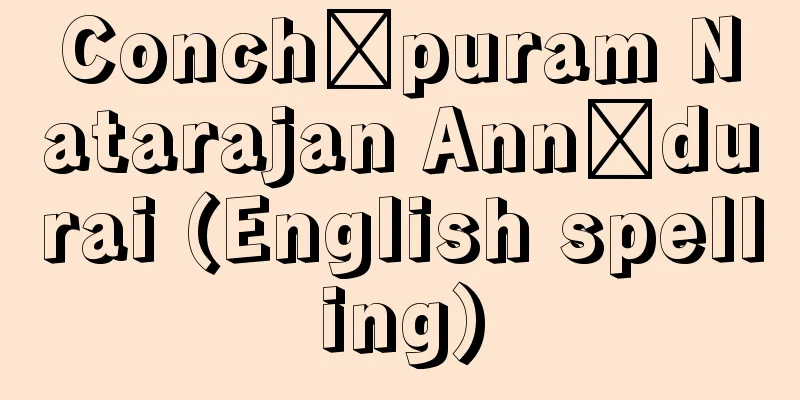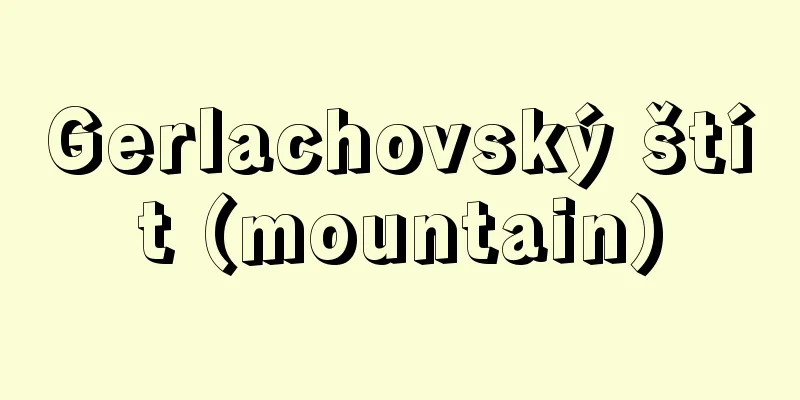Dry lacquer statue

|
A statue made from lacquer and hemp cloth. It seems that the technique was imported to Japan from China in the 7th century. At the time, it was called soku, soku, or kyocho. There are two methods, one of which is called dakkatsu kanshitsu (dakkatsu dry lacquer). With this, the rough shape of the statue is made from clay, and then several sheets of hemp cloth (7 or 8 for a life-size statue) are glued on top with lacquer to create layers, the clay inside is removed, a wooden frame is made for the hollow, the surface of the statue is finished with kokuso (lacquer mixed with wood powder and incense), and then lacquer leaf and coloring are applied. The Fukukenjaku Kannon statue in Todaiji's Sangatsudo Hall and the statues of the Eight Deities and Ten Great Disciples at Kofukuji are made using this method. The other is called mokushin danshitsu, where the general shape is made from wood and the details are expressed with raised kokuso. There are various types, from statues that are finished in great detail with wood and have a thin layer of kokuso applied, to statues where the wooden core is almost like a pillar. This technique can be made with lacquer of lower quality than mokushin danshitsu, so it was a kind of substitute for mokushin danshitsu, which was used towards the end of the Nara period when the national finances were in a state of collapse. There is a statue of this type among the statues in the lecture hall of Toshodaiji Temple. Dry lacquer statues were very popular in the Nara period because the plasticity of the material was a realistic style, but they gradually fell out of fashion because they were time-consuming to produce and the lacquer was expensive. However, wooden-core dry lacquer statues continued to be made into the early Heian period. Later, during the Kamakura and Muromachi periods, some examples of works without dry lacquer could be seen, influenced by Song sculpture. [Akio Sato] Source: Shogakukan Encyclopedia Nipponica About Encyclopedia Nipponica Information | Legend |
|
漆(うるし)と麻布(まふ)を材料としてつくった像。日本には7世紀ごろ中国からその技術が輸入されたらしい。当時は(そく)、即(そく)、夾紵(きょうちょ)などとよばれた。その製法に2種あり、その一つは脱活(だっかつ)乾漆(脱乾漆)とよばれる。これは、粘土で像のだいたいの形をつくり、その上に麻布を漆で何枚も(等身像で7、8枚という)はり合わせて層をつくり、内部の土を取り出し、その空洞に骨組みの木枠をつくり、像の表面を「こくそ」(漆に木の粉や抹香(まっこう)を混ぜたもの)で仕上げ、漆箔(はく)や彩色をする。東大寺三月堂不空羂索観音(ふくうけんじゃくかんのん)像、興福寺の八部衆や十大弟子像はこれである。もう一つは木心(もくしん)乾漆といい、木でだいたいの形をつくり、細部の表現を「こくそ」の盛り上げでする。かなり細部まで木で仕上げ、薄く「こくそ」をかけたものから、木心がほとんど柱のような像まで、いろいろである。この技法は脱乾漆より質の悪い漆でもつくることができるので、国家財政が破綻(はたん)をきたした奈良時代末期に行われた、いわば脱乾漆の代用品であった。唐招提寺(とうしょうだいじ)講堂諸像中にはこの種の像がある。 乾漆像は、材料の可塑性が奈良時代の写実的作風とあって大いに流行したが、制作に手間がかかり、漆の値段も高かったので、しだいに衰えた。しかし木心乾漆像は、平安初期に入っても行われている。その後、鎌倉・室町時代に、宋(そう)の彫刻の影響で脱乾漆の作例が多少みられる。 [佐藤昭夫] 出典 小学館 日本大百科全書(ニッポニカ)日本大百科全書(ニッポニカ)について 情報 | 凡例 |
<<: New Year's flower - Ganjitsuso
Recommend
Schimmelpheng GmbH (English name)
…In Japan, the first commercial credit agency was...
Mucous membrane
This refers to the parts of the inner wall surfac...
Boys Town
A village in eastern Nebraska, USA. An orphanage e...
classification act
...Based on this job description, all government ...
Gance - Abel Gance
French film director. Born in Paris. He initially...
Osenkorosi - Osenkorosi
…It is generally considered not to be tasty and i...
"San Francisco in the Fog" - Kirino San Francisco
…In 1951, he signed with Columbia Records, and th...
Daisy-fleabane (English spelling)
An annual or biennial plant of the Asteraceae fami...
Gaston Phoebus
...Also, from this time onwards, large and small ...
Ne Win
Myanmar soldier and politician. He became a member...
Ronin Association - Roninkai
A nationalist group associated with the Genyosha a...
fluorescent bleaching agent
…It is also called a fluorescent bleaching agent ...
Buccinum tenuissimum
…[Tadashige Nabe]. . … *Some of the terminology t...
Reaction - Handou (English spelling)
Originally a mechanical term, it means a reaction...
Western Electric Co.
The world's largest manufacturer of communicat...









![Ikina [village] - Ikina](/upload/images/67ce590941049.webp)